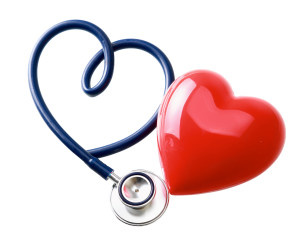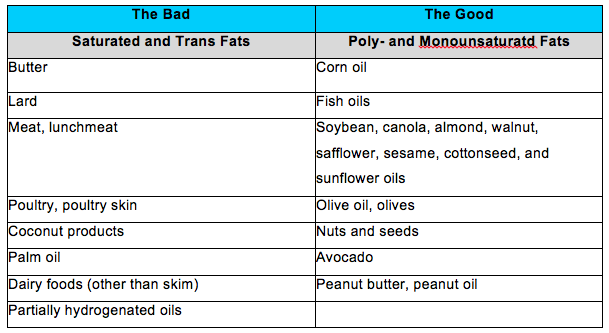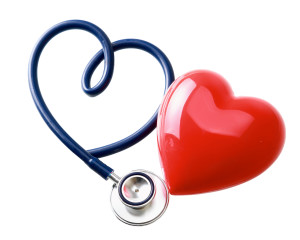 People who suffer from major heart events, such as heart attack and stroke, too often report noticing symptoms, but being too afraid of what they may mean to seek medical care. If you think you could be having a heart event, never hesitate to seek medical treatment. Even if your symptoms represent a minor, non-heart related illness, you owe it to yourself and your loved ones to question what you’re feeling.
People who suffer from major heart events, such as heart attack and stroke, too often report noticing symptoms, but being too afraid of what they may mean to seek medical care. If you think you could be having a heart event, never hesitate to seek medical treatment. Even if your symptoms represent a minor, non-heart related illness, you owe it to yourself and your loved ones to question what you’re feeling.
This February, in honor of American Heart Health Month, familiarize yourself with the signs and symptoms of heart attack and stroke, and make a promise to yourself that if you suspect you could be experiencing the onset of a heart event, you will seek medical care immediately.
Heart Attack Symptoms
The symptoms of a heart attack may include:
- Pain or discomfort in the chest that lasts for more than a few minutes, or may go away, only to come back. The discomfort may feel like pressure, squeezing, a fullness in the chest, or pain.
- Discomfort or pain in parts of the upper body, such as one or both arms, the back, the stomach, the neck, or jaw.
- Difficulty breathing or shortness of breath. This symptom may present with or without chest pain or discomfort.
- Breaking out in a cold sweat.
- Nausea.
- Lightheadedness.
What to Do if You Suspect You’re Experiencing a Heart Attack
Reacting immediately to the signs of a possible heart attack can help to limit damage to your heart. Call 911, rather than attempting to drive yourself to the emergency room. When your heart is in danger, ever second counts. The minutes it will take you to drive to the emergency room are critical, and allowing emergency personnel to begin treating you that much sooner could make a significant difference in your recovery.
Stroke Symptoms
The symptoms of a stroke may include:
- Feeling as if one side of your face is numb, or the appearance that one side of your face is drooping. When you smile, your mouth may look uneven.
- Difficulty speaking, or slurred speech. You may also find it difficult to repeat back phrases or sentences.
- Weakness or numbness is one arm. When raising both arms in the air, one arm may want to drift downward.
What to Do if You Suspect You’re Experiencing a Stroke
Just like with a heart attack, every second for a stroke victim is critical. When a stroke occurs, a blood vessel bursting, or clotting in the brain is robbing the brain of precious oxygen. If you believe you may be having a stroke, act quickly to minimize potential brain damage. Call 911 immediately.
Many stroke victims report feeling sleepy after the event occurs. You must resist the urge to rest or go to sleep. Call 911 and seek medical treatment as soon as you suspect an incident has occurred. Just like with a heart attack, allow emergency responders to drive you to the hospital, rather than driving yourself, to ensure you are receiving treatment as quickly as possible.
More
 February is American Heart Month. Throughout the month of February, organizations such as the American Heart Association work to raise awareness, financial support, and education for the nation’s number one killer. Cardiovascular disease, including heart disease, stroke, and high blood pressure, is responsible for one out of every three deaths, and is a leading cause of serious illness and disability across the nation. On February 5, the nation will place a special emphasis on the risks of heart disease for women on National Wear Red Day, a day of support for the Nation’s Go Red for Women movement. This February 5, take the time to learn about the risk factors that you face in your own life and how you can lead a heart healthy lifestyle. Start your search for knowledge by calculating your heart age.
February is American Heart Month. Throughout the month of February, organizations such as the American Heart Association work to raise awareness, financial support, and education for the nation’s number one killer. Cardiovascular disease, including heart disease, stroke, and high blood pressure, is responsible for one out of every three deaths, and is a leading cause of serious illness and disability across the nation. On February 5, the nation will place a special emphasis on the risks of heart disease for women on National Wear Red Day, a day of support for the Nation’s Go Red for Women movement. This February 5, take the time to learn about the risk factors that you face in your own life and how you can lead a heart healthy lifestyle. Start your search for knowledge by calculating your heart age.
Heart Age
Our lifestyles, diets, activity levels, and even genes, all impact the overall health of our hearts. Most American adults have a heart that is older than their actual age. Your heart age is the age of your heart and blood vessels as a result of your risk factors for heart attack and stroke. Some uncontrollable risk factors include family history. There are other risk factors, however, that can be managed through healthy lifestyle habits and behaviors.
Manageable factors that can age your heart include:
- Smoking
- High blood pressure
- High cholesterol
- Obesity
- An unhealthy diet
- A sedentary lifestyle
The good news is that you can make lifestyle changes to improve the age of your heart and reduce your risk for heart attack and stroke. Calculate your heart age using this free tool from Heartage.com. It takes into consideration your age, sex, systolic blood pressure, body mass index (BMI), and history of hypertension, smoking, and diabetes.
The Importance of Heart Age
Your goal should be to have a heart age that is the same or younger than your actual age. According to data collected by the CDC, approximately 69 million American adults that have not suffered a heart attack or stroke have a heart age that is 5 or more years older than their actual age. What’s more alarming, approximately one in two men and two in five women have heart ages five or more years older than their actual age.
Healthy Changes
If you find that your heart is older than your current age, know that you can make changes to improve your health. Focus on improving the following factors:
- Improve your diet – Make an effort to reduce the amount of high-sugar, high-fat, and packaged goods in your diet and replace them with a diet high in vegetables, fruits, whole grains, beans, and lean meats.
- Get active – Maintaining an active lifestyle can help lower your cholesterol and improve your BMI. Aim to get at least 30 minutes of moderate activity three to five days a week.
- Manage your cholesterol – Talk to your physician about a plan to lower your cholesterol and keep it managed long-term.
- Become a non-smoker – If you smoke today, make a plan to quit. If you are a non-smoker who is frequently exposed to secondhand smoke, find ways to limit your ongoing exposure.
This year, make American Heart Month personally meaningful. Learn your heart age, make a plan to manage your risk factors, and plan to celebrate your improvements next February.
More

Fat free diets. Fat free foods. For years, fat free fanatics have suffered from fat free mania, desperately trying to avoid any fat in their diets out of a belief that a fat free lifestyle is a guaranteed weight loss strategy. What many fat fearing dieters may not realize, however, is that our bodies need a healthy level of fat in order to maintain overall wellness. As a matter of fact, The United States Department of Agriculture recommends that adults get 20 – 35 percent of their total calories from fats. Fats provide essential fatty acids, offer fat-soluble vitamins, and are an important source of energy. It’s important to understand that there are different types of fats, and that some are healthier for you than others. Instead of trying to live a completely fat-fee lifestyle, simply knowing the different sources of good and bad fats, and what constitutes a healthy amount of each, can truly help you meet your weight loss goals.
The Good
Unsaturated fats are considered good fats. They include polyunsaturated fatty acids and monounsaturated fats. When eaten in moderation, our bodies use mono- and polyunsaturated fats to replace unhealthy fats, such as saturated or trans fats, a process that can help lower cholesterol and reduce our risk of heart disease. Omega-3 fatty acids are a specific type of good fat that offer healthy benefits for our hearts. Found in fatty fish such as salmon, trout, catfish, and mackerel, as well as flaxseeds and walnuts, The American Heart Association recommends eating two servings of these polyunsaturated fats each week, preferably in the form of fatty fish. While omega-3 supplements are available, it is healthiest to obtain the nutrient from food sources, rather than from vitamin supplements.
Monounsaturated fats are another form of good fat that can help prevent heart disease. Most commonly found in olive oil, avocados, hazelnuts, almonds, Brazil nuts, cashews, sesame seeds, pumpkin seeds, canola, oil and peanut oil, these healthy fats are a good source of vitamin E.
The Bad
Saturated and trans fatty acids are the unhealthy fats that should only be eaten sparingly. These bad fats can raise cholesterol levels, clog arteries, and increase the risk of heart disease, colon cancer, and prostate cancer. Saturated fats are most commonly found in animal products such as meat, poultry skin, high-fat dairy and eggs, and some vegetable fats such as coconut and palm oils.
Trans fats come in two forms: the kind that is naturally occurring and can be found in small amounts in some dairy and meat, and the kind that is artificial and that occurs when liquid oils are hardened into “partially hydrogenated” fats.
The Ugly
Artificial trans fats are having the greatest negative impact on the average American diet. Typically used in the preparation of fried foods, baked goods, cookies, icings, crackers, and packaged snack foods, experts warn that artificial trans fats are even more detrimental to our health than butter or lard. Even small amounts of artificial trans facts can increase our risk of heart disease.
Still confused? Use the chart below to identify good and bad fats so that you can incorporate the proper amounts of each in your healthy diet:

More
 Today is National Wear Red Day to raise awareness of heart disease and women.
Today is National Wear Red Day to raise awareness of heart disease and women.
Did you know that each year, heart disease claims the lives of more women then breast cancer and lung cancer combined? And that more women die every year from heart attacks than men? In fact, heart disease is the No. 1 killer of women in this country. What does that mean for you?
Consider this: heart disease is more likely to kill you than cancer, even breast cancer. And like cancer, heart disease does not discriminate—it’s just as likely to affect or kill young women, not just the older population.
What is heart disease?
The American Heart Association uses the term heart disease to cover several problems related to plaque buildup in the walls of the arteries, or atherosclerosis. As the plaque builds up, the arteries narrow, making it more difficult for blood to flow and creating a risk for heart attack or stroke.
Other types of heart disease include heart failure (where the heart doesn’t pump enough blood), an irregular heartbeat—arrhythmia—and heart valve problems.
What causes heart disease?
The usual suspects are the same for both men and women: high cholesterol, high blood pressure, smoking and/or being overweight. But certain other factors seem to play a bigger role in the development of heart disease in women, such as:
- Diabetes
- Metabolic syndrome—a combination of fat around your abdomen, high blood pressure, high blood sugar and high triglycerides
- Mental stress and depression
- Lack of physical activity
- Low levels of estrogen after menopause
- Pregnancy complications such as high blood pressure or gestational diabetes
All of these conditions can damage the lining and inner layers of the coronary (heart) arteries.
Signs and Symptoms of Heart Attack in Women
Believe it or not, many women don’t even recognize the signs of heart attack in themselves. The symptoms can be quite different from men’s, and they’re not always as dramatic as a feeling of tightness or pressure in the chest. And because it’s vitally important to get appropriate care as quickly as possible, women need to know these symptoms.
In addition to squeezing chest pain or pressure, both men and women may experience shortness of breath, sweating, pain in the shoulders, neck, arm, or jaw or a feeling of heartburn or indigestion, sometimes accompanied by nausea and vomiting, when a heart attack is coming on. Symptoms more likely in women include:
- Indigestion or gas-like pain
- Dizziness or nausea
- Unexplained weakness or fatigue
- Discomfort or pain between the shoulder blades
- Recurring chest discomfort
- A sense of impending doom
If you are experiencing any of these symptoms regularly, especially with sudden onset, call 911 immediately.
Next week, we will discuss tips for lowering your risk of heart disease.
More
 This month, you’ll see hearts everywhere in celebration of Valentine’s Day. Have you ever stopped to consider whether you’re taking care of your own heart? While February 14th only comes once a year, you can boost your own heart’s health 365 days a year with these five tips:
This month, you’ll see hearts everywhere in celebration of Valentine’s Day. Have you ever stopped to consider whether you’re taking care of your own heart? While February 14th only comes once a year, you can boost your own heart’s health 365 days a year with these five tips:
1. Find activities you love
Maybe you’ve always thought that making exercise a regular part of your life means sweating it out for hours at the gym. But activities like walking, dancing in your living room, swimming, bowling and even cleaning the house can count as exercise as long as you’re getting a little out of breath when you’re doing them.
Make a list of all of the active things you like to do and find a way to make at least one of them a part of your day, every day. Once you’ve made those activities into regular habits, try new ones—maybe now you’d feel more confident joining an exercise or dance class.
2. Remember the power of 10
You may think you don’t have time to exercise, but you can get heart-health benefits from just 10-minute bouts of activity. For example, ten minutes of walking three times a day has been shown to lower blood pressure more effectively than a one 30-minute stretch of walking. Try a simple schedule of walking once before work, once over lunch and once after dinner, and you’ve just squeezed in a good amount of exercise!
3. Add something other than cardio
When you think of heart-healthy exercise, you probably think of aerobic or cardiovascular activities like jogging. But strength training, like lifting weights or doing push-ups and lunges can improve the health of your ticker, too. When you lift weights at a moderate intensity, you’ll raise your heart rate—you’ll be working both your muscular system and your cardiovascular system. And when you make your muscles stronger, you make your entire body stronger. So try to do some resistance training a few times a week.
4. Find ways to lower your stress level
Stress plays a critical role in heart health, and exercise is great at kicking stress to the curb. Workouts like yoga, Pilates and Tai Chi are especially good for de-stressing and improving the mind-body connection. If you’re not ready to try those activities, try meditation or just a relaxing hot bath with some soft music playing. It’s important to give your heart a break from the stresses of your regular lifestyle.
5. Eat healthy foods
Of course you have to fuel yourself right to power yourself through your day and your workouts. Eating a diet that’s rich in fruits, veggies, whole grains, lean proteins and healthy fats is key. Colorful foods like pomegranates, blueberries, tomatoes, and spinach are rich in heart-healthy antioxidants, while fatty fish like salmon, sardines, or rainbow trout twice a week provide omega-3 fatty acids, which help decrease your blood pressure.
At Chouchani, Sayegh and Bagnarello, we promote a patient’s total health. If you’d like to find out more about our OB-GYN practice in Buffalo, call us anytime or visit our website at wny-obgyn.com.
Photo courtesy of freedigitalphotos.net.
More
 People who suffer from major heart events, such as heart attack and stroke, too often report noticing symptoms, but being too afraid of what they may mean to seek medical care. If you think you could be having a heart event, never hesitate to seek medical treatment. Even if your symptoms represent a minor, non-heart related illness, you owe it to yourself and your loved ones to question what you’re feeling.
People who suffer from major heart events, such as heart attack and stroke, too often report noticing symptoms, but being too afraid of what they may mean to seek medical care. If you think you could be having a heart event, never hesitate to seek medical treatment. Even if your symptoms represent a minor, non-heart related illness, you owe it to yourself and your loved ones to question what you’re feeling.




